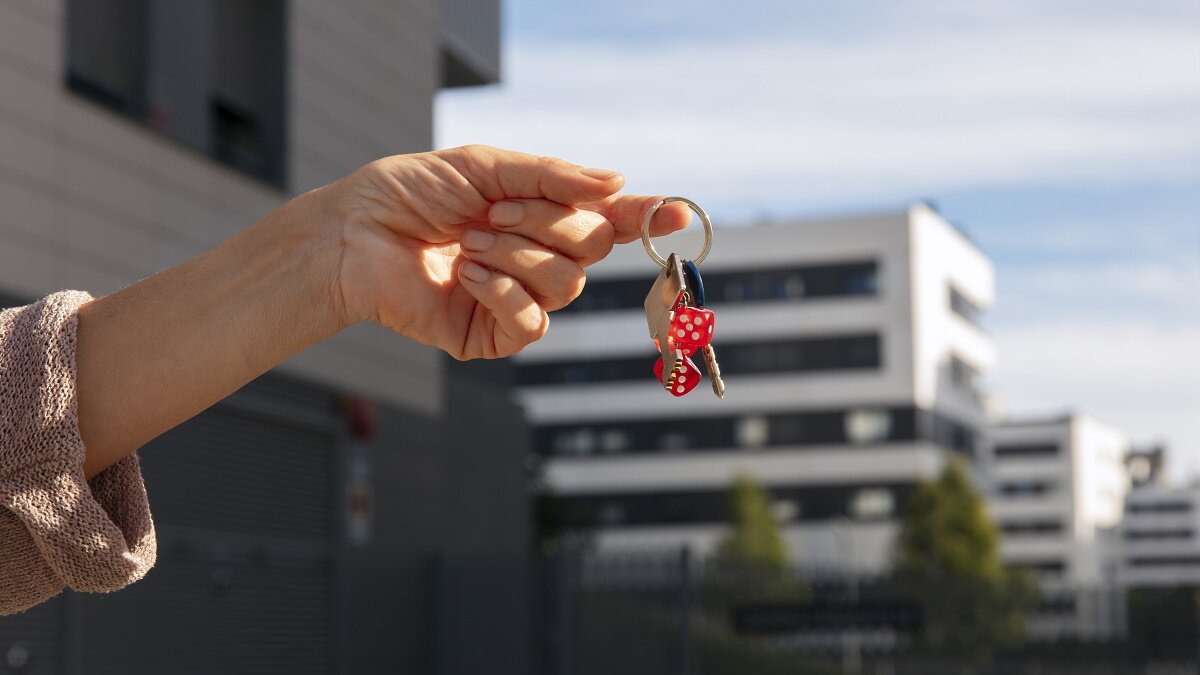Buying or selling a home is rarely straightforward, and one of the key players in the process is the conveyancer.
These licensed professionals handle the paperwork, contracts, and legal checks that make a property transfer possible.
Of course, some buyers and sellers wonder whether they can save money by doing it themselves. But before skipping professional help, it's worth knowing what's involved, and what's at stake if things go wrong.
Here's a breakdown of how conveyancing works, what it costs, when you need one, and whether DIY conveyancing is really worth it.
What is conveyancing and how does it work?
Conveyancing
The process of shifting ownership of a property from the seller to the buyer. The ins and outs of the process vary depending on where the property is located and whether you're buying it or selling it.
If you're buying a property, conveyancing will include running relevant property and title searches, calculating the stamp duty payable, and liaising with finance providers.
If you're selling a property, the conveyancing process will involve reviewing the contract of sale, ensuring the property is compliant with all relevant laws, and completing other legal documentation.
Do you need a conveyancer when buying or selling a house?
A conveyancer or solicitor can take on many of the administrative tasks involved with transacting in property, whether you're a buyer or a seller.
Engaging a conveyancer generally isn't a legal requirement. You can typically choose to undertake the process yourself.
A good conveyancer will:
- Guide you through the contract of sale and process of buying or selling a property
- Research the property title, identify potential issues such as easements, covenants, outstanding mortgages, and other issues
- Deal with the other party and their agent/s on your behalf
- Coordinate payment at settlement and liaise with lenders
- Provide information on what happens upon settlement
- Prepare and lodge all documents needed for the transfer of the property
- Ensure the settlement process proceeds smoothly and on time
How much does conveyancing cost?
The fees charged by conveyancers will vary across the nation, as do the qualifications conveyancers need (in Queensland, for instance, conveyancing must be overseen by a solicitor).
Typically, a person buying or selling a property should expect to pay $1,000 to $3,000 for the conveyancing process. That may or may not include disbursements (costs incurred by your conveyancer on your behalf), for which you might expect to pay $200 to $700.
Here're some of the fees and charges a conveyancer might ask for their services:
| Fee type | Approximate cost |
|---|---|
| Conveyancer's fee | $500 to $2,500 |
| Search fees | $300 to $600 |
| Title registration/transfer | $50 to $200 |
| General clerical work | Up to $50 |
Your conveyancer will also organise payment of other costs and taxes, such as your deposit and stamp duty. For that reason, they'll likely ask you to transfer more funds than they charge so they can ensure other costs are paid when they need to be.
When do I need to secure a conveyancer?
When to engage with a conveyancer as a buyer
Often buyers first reach out to a conveyancer when they've already put forward a successful offer and want a professional to review the contract of sale. Though, there are benefits to getting in touch earlier.
When to engage with a conveyancer as a seller
For sellers, the best time to make initial contact with a conveyancer varies between states and territories. For the most part, it's recommended a seller secure a conveyancer before they list their property for sale. Though, in some states and territories, they can wait until they've received an offer.
The conveyancing process: step by step
The process varies depending on your state or territory, and whether you're buying privately or at auction, but it generally follows these steps:
The conveyancing process for buyers
Offer or auction prep
The conveyancing process will be slightly different depending on whether you're hoping to buy via a private sale (e.g. you plan to submit an offer) or via auction.
-
Buying via private sale
You'll make an offer and negotiate terms - which will typically include any clauses, like subject to finance or subject to sale of another property, and the length of your settlement. -
Auction
Make sure you and your conveyancer review the contract beforehand - carefully! If you're the winning bidder, the sale is unconditional.
Contract review
If your bid or offer is successful, your conveyancer will review the contract of sale, as well as any vendor disclosures, and get to work.
You and the seller will sign the contract of sale, the buyer will generally put down a deposit (commonly 10%), and in cases of private sales, the cooling off period will begin.
Inspections & searches
The near future will likely see you and/or your conveyancer organising building and pest inspections and valuations, securing strata reports (if applicable), and requesting title and property searches.
Finance approval
Yourself and your conveyancer will also finalise home loan approval and arrange building insurance (often required by lenders). In some states, the buyer is responsible for insurance from the day the contract is entered into.
Pre-settlement checks
Before settlement is finalised, the buyer will reimburse the seller for any prepaid rates and utilities, stamp duty will generally be paid, and transfer documents will be prepared and verified.
Settlement day
On settlement day, the buyer or their lender will release the funds to the seller, if the seller has a mortgage on the property it will be discharged, and the title will be transfered. The buyer will then be given the keys and can officially call their property their own.
The conveyancing process for sellers
Engage a conveyancer early
It's important that sellers secure a conveyancer early on, as they'll be involved in preparing the contract of sale and any documents requiring disclosure. In some states, it's even illegal to market a property for sale without a valid contract of sale being available.
Accept an offer or sell at auction
Once you get an offer you're happy with or the gavel has successfully fallen at auction, both the buyer and seller will sign the contract of sale and the buyer will pay the agreed deposit.
Requisitions and responses
It's understandable that a buyer would have questions about the property during the settlement period, and a decent seller will remain on hand to answer any that come up.
The buyer will also likely need access to the property so inspections can be conducted, and the seller or their agent should make this possible.
Settlement day
On settlement day, the buyer or their lender will hand over the sale proceeds and any mortgage held by the seller will be discharged. The seller can then hand over the keys and move onto their next adventure.
Is it worth DIY-ing your conveyancing?
Most states and territories allow those buying or selling a property to do their own conveyancing. You can even buy DIY conveyancing kits online. These typically cost around $100 to $200 and include all you need for a successful property transaction, such as:
- A step-by-step guide
- A contract of sale
- All relevant forms
- A list of government agencies involved
- A list of necessary property searches
- A glossary of terms
It's worth noting that the cost of title searches and the likes, generally included in a conveyancer's disbursements, will still need to be paid if you do your own conveyancing.
There are the important factors to consider when deciding whether to do your conveyancing yourself or hire a professional to handle the process for you:
1. Money
Handling the conveyancing process yourself could save you on professional fees, potentially up to a couple of thousand dollars based on the figures mentioned earlier - a significant sum.
However, the legal realm is notoriously complicated and confusing, and a simple oversight could end up costing far more than hiring a professional would have. The last thing any property buyer wants is to lose their deposit over an administrative error, even if that risk seems minimal. A seller, on the other hand, risks losing a sale altogether, which could have serious consequences.
2. Time
While DIY conveyancing may save you money, it often comes at the expense of time and peace of mind. Tasks like ordering title searches, reviewing contracts, and ensuring documents are properly completed can consume hours better spent with family or on other priorities. Not to mention the sleepless nights the process could cause.
3. Industry knowledge
One of the key benefits of hiring a solicitor or conveyancer is their expertise in handling all aspects of the transaction, including unexpected issues that may arise. They're trained professionals who stay up-to-date with the latest legal changes and can offer valuable advice on how to address additional requests or complications.
4. Protection
If you're buying a property, your conveyancer may be the only professional working solely in your best interest. The real estate agent is focused on securing the highest price for the seller and your home loan lender's priority is protecting their mortgage. Your conveyancer, on the other hand, is dedicated to safeguarding your legal interests and ensuring a smooth transaction. They also carry indemnity insurance, offering you protection if something goes wrong.
Handling the process yourself leaves you without that safety net, with no recourse to recover losses if mistakes occur.
5. Insurance
No matter how experienced a conveyancer is, mistakes can happen. If they do, it's important to know if you're going to be protected by insurance.
Accredited professionals typically carry indemnity insurance. This can protect you and the conveyancer in the event they make a mistake that leaves one or both of you out of pocket.
6. Transparency
Another advantage of DIY conveyancing is having complete visibility and control over the entire process. You'll handle every step, from reviewing contracts to checking titles and certificates, ensuring you're fully involved in the transaction.
However, while the transparency of DIY conveyancing is appealing, it also comes with added responsibility. You'll need to ensure every detail is thoroughly checked and managed, which could be time-consuming and overwhelming.
Image by freepik
First published in October 2024
Collections: Conveyancer Buying a home Selling your property




Share